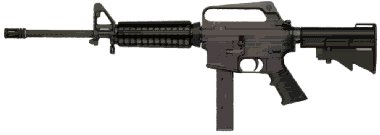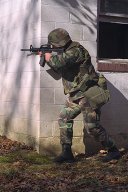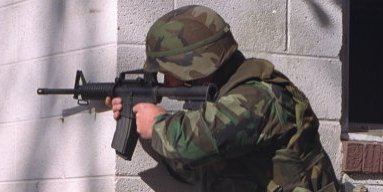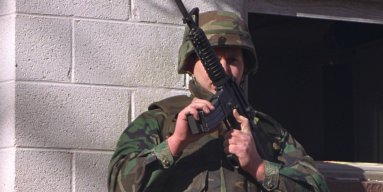

Why you need an Ambi-Catch TM
ARM (Ambidextrous Release Mechanism)
Improved design eliminates problems caused by the "issue" magazine catch
The magazine catch issued with the M16A2, M4 Carbine, AR15 and other firearms that use an M16 type magazine often require adjustment to correct magazine retention problems (see US Army TM9-1005-319-10, pages 88 and 89). Excessive machining tolerances in the lower receiver can cause increased lateral movement of the magazine release button and catch limiting the engagement of the tooth. This condition leads to magazine retention failure. We have encountered this problem with several Colt 9mm Sub guns. Installation of an Ambi-CatchTM corrected the problem. Increased tooth dimension and focused, direct spring tension ensure constant, positive engagement of the Ambi-CatchTM with the magazine.

The magazine release, selector lever, charging handle and trigger are all primary controls of the M16, M4 and AR15. In a tactical situation, once you have selected the mode of fire (safe, semi-auto, auto or burst) there is no need to use the selector lever. You must use the magazine release every time that you reload (every 5-100 rounds fired depending upon the magazine used). If you have determined that you need an Ambidextrous Selector Lever then you need an Ambidextrous Magazine Release.
The addition of an ambidextrous release capability to your M16, M4 or AR15 increases your options of magazine release and replacement. Your success or survival in a tactical environment could depend on these options. Real life incidents have shown that a soldier or law enforcement officer's life depended on the ability to reload and fire their weapon with the weak hand.
The selection of a hasty fighting position may require the shooter to engage his enemy from a "weak-handed" posture. Although this may reduce his accuracy it also reduces the amount of the shooters body that is visible to the enemy. In a MOUT (Military Operations in Urban Terrain) environment this "weak-hand" position may be needed when "popping" corners of buildings or hallways.




MOUT environments:
When the weapon is supported by the "non-firing" hand (the right hand when a right-handed shooter is engaging an enemy from a "weak-hand" position) it is easier to release the magazine and secure another magazine for loading with the firing hand.
The absence of a means to release the magazine on the left side of the M16A2 or M4 Carbine makes for an awkward or difficult magazine change. Rapid and efficient magazine changes are critical to your success in a tactical environment.
Injury to the dominant eye or firing hand
An injury to the dominant eye or firing hand could call for the use of a "weak hand" or non-dominant firing position. These injuries can be caused by accidents occurring while moving to the objective (rappelling injury, cutting hand on glass or on concertina wire) or from explosions and direct fire.
For years individuals have been training to use their "weak hand" to fire a pistol. If your training does not include"weak hand" drills with the rifle, you should include these critical skills in your training. Be wary of instructors or individuals that tell you that these skills are not necessary or will never be needed. Remember Murphy's Law, "anything that can go wrong, will go wrong".
Copyright © 1999-2005 Norgon, LLC